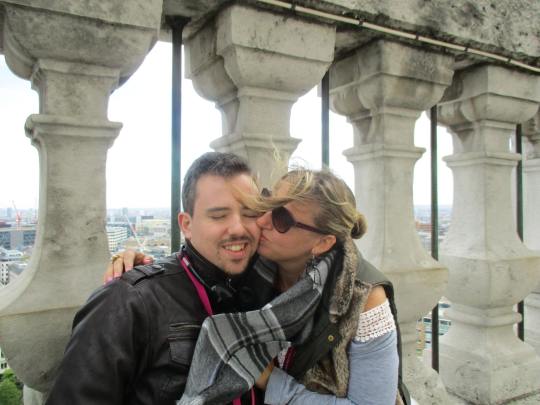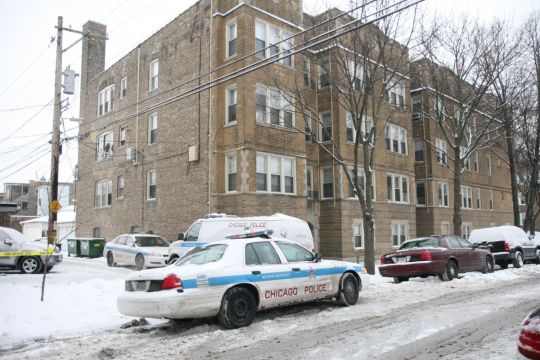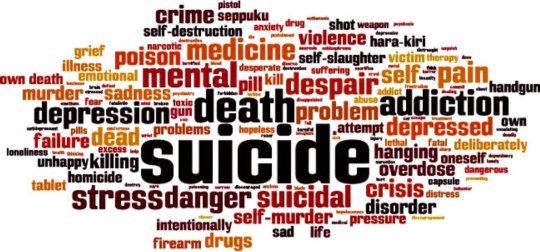#SuicideContagion
Text
#SeptemberisNationalSuicidePreventionMonth - Why Do People Die By #Suicide?

Every 11 minutes, someone dies by #suicide. Learn about who is at risk for #suicidalideation, why someone may want to end their life, and what you can do to help.
By Sarah Schuster
#Suicide is one of the top 10 leading causes of death in the #UnitedStates, with one person taking their life every 11 minutes.¹ #Suicidalideation, or the experience of having #suicidalthoughts and urges, is even more common. While tens of thousands of people die by #suicide every year, it's estimated that millions of people consider #suicide, plan a #suicideattempt, or attempt #suicide and survive.
Understanding why people die by #suicide or experience #suicidalthoughts is complicated. While understanding the "why" is only one part of #suicideprevention, it can help us act more compassionately toward those who experience #suicidalthoughts, give comfort to those who have lost someone to #suicide, and better understand the pain of people who experience suicidality.
Why We Don't Say 'Commit' #Suicide
The language we use when we talk about #suicide matters. For example, despite its common usage, experts now advise against using the phrase "committed #suicide." Instead, we should use the more neutral phrases, "died by #suicide" or "take their own life."8 Saying someone "committed" #suicide stigmatizes the act of dying by #suicide and makes it sound as if someone committed a crime.
Similarly, it's important to avoid framing someone's #suicideattempt as "successful" or "unsuccessful." Surviving a #suicideattempt is not a failure and dying by #suicide is not a success. Instead, you can simply state if the person died or survived after a #suicideattempt.
When talking about someone's #suicide, it is also recommended to avoid sharing details about the #suicide method, such as how the person died. Knowing where or how a #suicide happened can contribute to #suicidecontagion, a phenomenon where one #suicide death leads to many more.
#James Donaldson notes:Welcome to the “next chapter” of my life… being a voice and an advocate for #mentalhealthawarenessandsuicideprevention, especially pertaining to our younger generation of students and student-athletes.Getting men to speak up and reach out for help and assistance is one of my passions. Us men need to not suffer in silence or drown our sorrows in alcohol, hang out at bars and strip joints, or get involved with drug use.Having gone through a recent bout of #depression and #suicidalthoughts myself, I realize now, that I can make a huge difference in the lives of so many by sharing my story, and by sharing various resources I come across as I work in this space. #http://bit.ly/JamesMentalHealthArticleOrder your copy of James Donaldson's latest book,#CelebratingYourGiftofLife:From The Verge of Suicide to a Life of Purpose and Joy
http://www.celebratingyourgiftoflife.com
What Puts Someone At Risk for #Suicide?
Part of what makes #suicide so complicated is that no sole factor can predict with high accuracy who will actually die by #suicide. 2 However, recognizing possible signs of #suicidalthoughts and screening people for #suicidalideation can help us better understand the risk.
It is important to know that dying by #suicide is not caused by weakness, a personality flaw, or selfishness. These are stigmatized explanations of why #suicide happens and can discourage people experiencing #suicidalthoughts from asking for help.
Instead, those who die by #suicide were likely exposed to biological, environmental, and social risk factors that made them vulnerable to #suicidalthoughts. Some risk factors may include:2
- Having a family member die by #suicide
- Easy access to materials and methods that can kill you
- #Stigma around #mentalhealth and reaching out for support
There is so much more we need to learn about #suicide and how to prevent #suicide deaths. As new research comes out, additional risk factors may also be added.
Reasons People Die by #Suicide
We often can't exactly determine what led to a #suicide death. But, some people who have attempted #suicide or have had #suicidalthoughts can help us understand why they wanted to end their life. Here is what we know.
#MentalIllness
Having a #mentalillness can increase the risk of dying by #suicide, but the relationship between the two isn't always that simple. To understand the connection between #mentalillness and #suicide, it can be helpful to look at how #mentalillness affects someone's quality of life. Some ways that #mentalillness can contribute to #suicide include:4,5
- Unequal access to #mentalhealthcare and treatment
- Lack of social support or feeling like you don't have anybody to go to
- Feeling isolated, lonely, or misunderstood
- Difficulty maintaining relationships
- Decreased quality of life due to increased #stress, (e.g., being unable to maintain a job)
- Increased impulsivity, which may occur in those with #borderlinepersonalitydisorder
Some #mentalhealthconditions, like #depression and #substanceusedisorder, are most commonly associated with #suicide. However, other conditions like #anxietydisorders, #eatingdisorders, and #personalitydisorders may also increase #suiciderisk.3
History of #Trauma
Experiencing #trauma can significantly affect you at any age. However, #childhood #trauma is one of the more significant long-term risk factors for #suicide.2 Some examples of #childhood #trauma include emotional neglect, physical abuse, losing a #parent, #sexualassault, and #bullying. Unfortunately, these risk factors are accumulative, meaning the more traumatic life events you experience, the higher your risk of attempting #suicide.
#Trauma can impact us long into our #adult years, causing challenges like #posttraumaticstressdisorder (#PTSD), #depression, low #self-esteem, shame, #isolation, and attachment issues that can make it hard to maintain relationships.
Circumstantial Challenges
Challenging real-life stressors can lead to #suicidalthoughts and increase someone's chances of dying by #suicide.2,4 This can especially be true if someone lacks the skills or social support to cope with stress. Examples of challenging situations that can put someone at risk for #suicide include:
- Facing legal challenges
- Losing a job
- Overwhelming #financial troubles
- Going through a break-up or losing a significant relationship
- Death of a loved one death
Feelings of #Hopelessness
Generally, people who are suicidal feel hopeless and pessimistic about their future. While it's typical to experience an occasional feeling of #hopelessness, people at risk for #suicide are more likely to experience rumination—meaning they may get stuck on repetitive, negative feelings or have recurring thoughts about death.2
Feeling like you're a burden to the people in your life or like you don't belong anywhere in the world are two other powerful emotions associated with #suicide.6
Identity
#Gender, #race, #sexualorientation, and age all impact #suiciderisk. While women attempt #suicide more often than #men, #men die by #suicide at higher rates.2 Across all genders, most #suicides occur between the ages of 35 and 44, although age-related risks differ across #ethnicity. For example, #Black and #Latino populations are more likely to die by #suicide at earlier ages than their white counterparts.
Certain marginalized communities, like people in the #LGBTQIA community, have a higher risk for #suicide. Studies show that up to 43% of #transgender people have reported attempting #suicide.2 It's important to note that being #transgender is not a #suicideriskfactor. #Trans people often experience discrimination, #bullying, and #stigma—all of which can increase #suiciderisk.
People with disabilities are at-risk for #suicide as well. One survey found people with disabilities are three times more likely to report #suicidalideation compared to people without disabilities.7
#Veterans, people who live in #ruralareas, and Indigenous communities are also disproportionately impacted by #suicide.7 #Suicide does not discriminate when it comes to identity, but the trauma exposure, #stress, discrimination, and societal challenges that certain groups face may put them more at risk.
How to Help Someone Who May Be Suicidal
If someone you love is struggling with #suicidalthoughts or urges, there are some things you can do.
Don't Panic
#Suicidalthoughts can exist on a spectrum. Having a loved one open up about their #suicidalthoughts doesn't always mean they are in immediate danger. Ask if they have a #suicide plan or access to items they may use to harm themselves. This information can help you understand their level of risk. Remember: Asking someone about their #suicidalthoughts will not increase their risk of #suicide, so don't be afraid to ask directly.
Listen to Them
Simply sitting with someone in their pain can be powerful. You likely won't be able to solve all the factors contributing to their #suicidalthoughts in one conversation, but don't dismiss the power of listening. Oftentimes, feeling connected to someone or something can temporarily heal feelings of #hopelessness and disconnect caused by #suicidalthoughts.
Remove Any Lethal Means From the Home
If you live in the same space as someone experiencing #suicidalthoughts, consider removing or securing any dangerous items in your home. This could look like locking up a gun or removing sharp objects from the kitchen.
Encourage Them to Access Crisis Resources
If someone you love is feeling suicidal, you can encourage them to call the #NationalSuicidePreventionHotline at 988, or text HOME to 741741 to access the Crisis Text Line. Through these resources, they can chat with a trained crisis #counselor who can help you and your loved one figure out the appropriate next step. You can also call these crisis resources yourself if you're concerned about your loved one's safety.
Here are additional resources that can help you support a loved one:
- Supporting Someone with #SuicidalThoughts from Samaritans
- What to Do When Someone Is at Risk from the #AmericanFoundationforSuicidePrevention
- General Resources from the #CentersforDiseaseControlandPrevention
Local resources may also be available. Resources differ based on your home city or state. You may also consider searching online for local resources that can support you or your loved one.
Summary
#Suicide is a public health issue that affects millions of people, yet so many conversations about #suicide are riddled with misunderstanding and shame. There is still so much to learn about why people die by #suicide and how we can prevent suicides from occurring. #Suicide is complicated and is often due to many factors working together. Living with a #mentalillness, a history of trauma, and life challenges can all make someone more likely to die by #suicide. Fortunately, there are some ways you can support someone who is suicidal, including listening to them, removing dangerous items, and helping them access crisis resources.
If you or someone you know is in crisis, there's help available. Call 911 for emergency services or reach out to the #NationalSuicidePreventionLine at 988 for support with #mentalhealthcrises.
Read the full article
0 notes
Text
Suicide Contagion

Suicide contagion is when one person is so emotional from the loss of another person’s suicide, that they also commit suicide.The effect can be from suddenly losing someone very close like a best friend or family member, to losing a beloved popular figure, like Robin Williams. In either case, the likely-hood of a person taking their own life due to a loved one’s suicide, increases by 67%. Not a small increase.
Another large statistic finds that an estimated 48 and 500 million people every year, deeply grieve for a person that kills themself. This number, while it clearly has a huge margin, isn’t totally shocking considering about 1 million people are successful at killing themselves every year (not including the attempts that aren’t successful).
So essentially, every year 1 million people take their own life and 48-500 million people are 67% more likely to take their own life due to grief.
*Statistics attained from: http://www.thelancet.com/journals/lanpsy/article/PIIS2215-0366(14)70224-X/fulltext
I completely understand why suicide risk is increased after losing someone special to a suicide, this is why:
Personally, I think this is so because of plain old grief. My pain is so deep, I want to cut myself to feel physical pain to distract my heart. There is a ache that I feel in my mind, my heart, my bones and all my cells, and I don’t see an end to that pain, in sight. Death sounds like a sweet refuge from this life that has no light.
For me, Diogo’s absence is enough to make me want to leave this world. where I once saw miles of vast lands cleared for possibilities; I now see a vacant wasteland of nothingness. I see nothing but a hole that will never be filled. Diogo wrote in his note that he lost his “why,” and now he’s gone and I’ve lost my “why” too.
When you lose someone significant, it’s like losing a fallen hero. It’s common to think that if they can’t make it in life (and they are way more amazing than I could ever be), then I can’t make it and I should give up now. Diogo studied science, society, religion and peace. He knew everything to me, and clearly he must have known something that I don’t, which is why he took his life; and maybe ending my life now is the best option.
Not to mention the guilt. I feel like I am partly responsible for his death. I should have, could have, did, didn’t do something that I thought about doing. I could have made a difference and shown him a window where he saw only stark walls. Diogo always said this world is illusions and I could have shown him a different illusion that could have made him decide to stay with us. I feel guilt beyond measure and ending the guilt sounds like a sweet dream.
All of these feelings make me 67% more likely to take my life, statistically speaking. But if you look at just me, and don’t throw me in with all the other people in the world, I’m sure my possibility is much higher. How would I do it? I don’t know, I give it no thought; I don’t want to do anything that is out of the natural order. I just lay in bed at night and wish I would naturally bleed out. Why, you may ask? Because I have so much pain that I wish I could drain my body of ever ounce of grief, guilt, pain, confusion, frustration and self-pity.
I think about this in secret. I don’t talk about it, I deny it, I bury it in a corner and like a split personality I talk about suicide like it’s so far from me, not accessing the place I can relate to it. In this way, I am exactly like him. He did this every day, with most people. He carried this buried idea almost living a double life for 12 years. Living happily, living life to the fullest, discussing politics, posterity, naming our babies, and yet all along he knew it would end his way. He was pretending, and now I am pretending too.
#bleedingout#pain#heartache#heartbreak#coupling#surviving#coping#suiciderates#suicidecontagion#suicideblog#suicideawareness#suicide#please come back#takemewithyou#iloveyou#dontleaveme#istillmisshim#interrealmal#takinginair#lovestory#sadstory
3 notes
·
View notes
Photo

EXECUTIVE PERSPECTIVE: Reaching the Mental Health Tipping Point "With the recent passing of Kate Spade and Anthony Bourdain, Dr. Barbara Van Dahlen, Founder and President of Give an Hour, in this piece reflects on the importance of raising mental health awareness, the danger of a suicide contagion and provides the tips needed to drive cultural change." Read the article > > > https://tmsnrt.rs/2sUO3Rt #changementalhealth #MentalHealthAwareness #KateSpade #AnthonyBourdain #suicidecontagion
0 notes
Text
#SeptemberisNationalSuicidePreventionMonth - Why Do People Die By #Suicide?

Every 11 minutes, someone dies by #suicide. Learn about who is at risk for #suicidalideation, why someone may want to end their life, and what you can do to help.
By Sarah Schuster
#Suicide is one of the top 10 leading causes of death in the #UnitedStates, with one person taking their life every 11 minutes.¹ #Suicidalideation, or the experience of having #suicidalthoughts and urges, is even more common. While tens of thousands of people die by #suicide every year, it's estimated that millions of people consider #suicide, plan a #suicideattempt, or attempt #suicide and survive.
Understanding why people die by #suicide or experience #suicidalthoughts is complicated. While understanding the "why" is only one part of #suicideprevention, it can help us act more compassionately toward those who experience #suicidalthoughts, give comfort to those who have lost someone to #suicide, and better understand the pain of people who experience suicidality.
Why We Don't Say 'Commit' #Suicide
The language we use when we talk about #suicide matters. For example, despite its common usage, experts now advise against using the phrase "committed #suicide." Instead, we should use the more neutral phrases, "died by #suicide" or "take their own life."8 Saying someone "committed" #suicide stigmatizes the act of dying by #suicide and makes it sound as if someone committed a crime.
Similarly, it's important to avoid framing someone's #suicideattempt as "successful" or "unsuccessful." Surviving a #suicideattempt is not a failure and dying by #suicide is not a success. Instead, you can simply state if the person died or survived after a #suicideattempt.
When talking about someone's #suicide, it is also recommended to avoid sharing details about the #suicide method, such as how the person died. Knowing where or how a #suicide happened can contribute to #suicidecontagion, a phenomenon where one #suicide death leads to many more.
#James Donaldson notes:Welcome to the “next chapter” of my life… being a voice and an advocate for #mentalhealthawarenessandsuicideprevention, especially pertaining to our younger generation of students and student-athletes.Getting men to speak up and reach out for help and assistance is one of my passions. Us men need to not suffer in silence or drown our sorrows in alcohol, hang out at bars and strip joints, or get involved with drug use.Having gone through a recent bout of #depression and #suicidalthoughts myself, I realize now, that I can make a huge difference in the lives of so many by sharing my story, and by sharing various resources I come across as I work in this space. #http://bit.ly/JamesMentalHealthArticleOrder your copy of James Donaldson's latest book,#CelebratingYourGiftofLife:From The Verge of Suicide to a Life of Purpose and Joy
http://www.celebratingyourgiftoflife.com
What Puts Someone At Risk for #Suicide?
Part of what makes #suicide so complicated is that no sole factor can predict with high accuracy who will actually die by #suicide. 2 However, recognizing possible signs of #suicidalthoughts and screening people for #suicidalideation can help us better understand the risk.
It is important to know that dying by #suicide is not caused by weakness, a personality flaw, or selfishness. These are stigmatized explanations of why #suicide happens and can discourage people experiencing #suicidalthoughts from asking for help.
Instead, those who die by #suicide were likely exposed to biological, environmental, and social risk factors that made them vulnerable to #suicidalthoughts. Some risk factors may include:2
- Having a family member die by #suicide
- Easy access to materials and methods that can kill you
- #Stigma around #mentalhealth and reaching out for support
There is so much more we need to learn about #suicide and how to prevent #suicide deaths. As new research comes out, additional risk factors may also be added.
Reasons People Die by #Suicide
We often can't exactly determine what led to a #suicide death. But, some people who have attempted #suicide or have had #suicidalthoughts can help us understand why they wanted to end their life. Here is what we know.
#MentalIllness
Having a #mentalillness can increase the risk of dying by #suicide, but the relationship between the two isn't always that simple. To understand the connection between #mentalillness and #suicide, it can be helpful to look at how #mentalillness affects someone's quality of life. Some ways that #mentalillness can contribute to #suicide include:4,5
- Unequal access to #mentalhealthcare and treatment
- Lack of social support or feeling like you don't have anybody to go to
- Feeling isolated, lonely, or misunderstood
- Difficulty maintaining relationships
- Decreased quality of life due to increased #stress, (e.g., being unable to maintain a job)
- Increased impulsivity, which may occur in those with #borderlinepersonalitydisorder
Some #mentalhealthconditions, like #depression and #substanceusedisorder, are most commonly associated with #suicide. However, other conditions like #anxietydisorders, #eatingdisorders, and #personalitydisorders may also increase #suiciderisk.3
History of #Trauma
Experiencing #trauma can significantly affect you at any age. However, #childhood #trauma is one of the more significant long-term risk factors for #suicide.2 Some examples of #childhood #trauma include emotional neglect, physical abuse, losing a #parent, #sexualassault, and #bullying. Unfortunately, these risk factors are accumulative, meaning the more traumatic life events you experience, the higher your risk of attempting #suicide.
#Trauma can impact us long into our #adult years, causing challenges like #posttraumaticstressdisorder (#PTSD), #depression, low #self-esteem, shame, #isolation, and attachment issues that can make it hard to maintain relationships.
Circumstantial Challenges
Challenging real-life stressors can lead to #suicidalthoughts and increase someone's chances of dying by #suicide.2,4 This can especially be true if someone lacks the skills or social support to cope with stress. Examples of challenging situations that can put someone at risk for #suicide include:
- Facing legal challenges
- Losing a job
- Overwhelming #financial troubles
- Going through a break-up or losing a significant relationship
- Death of a loved one death
Feelings of #Hopelessness
Generally, people who are suicidal feel hopeless and pessimistic about their future. While it's typical to experience an occasional feeling of #hopelessness, people at risk for #suicide are more likely to experience rumination—meaning they may get stuck on repetitive, negative feelings or have recurring thoughts about death.2
Feeling like you're a burden to the people in your life or like you don't belong anywhere in the world are two other powerful emotions associated with #suicide.6
Identity
#Gender, #race, #sexualorientation, and age all impact #suiciderisk. While women attempt #suicide more often than #men, #men die by #suicide at higher rates.2 Across all genders, most #suicides occur between the ages of 35 and 44, although age-related risks differ across #ethnicity. For example, #Black and #Latino populations are more likely to die by #suicide at earlier ages than their white counterparts.
Certain marginalized communities, like people in the #LGBTQIA community, have a higher risk for #suicide. Studies show that up to 43% of #transgender people have reported attempting #suicide.2 It's important to note that being #transgender is not a #suicideriskfactor. #Trans people often experience discrimination, #bullying, and #stigma—all of which can increase #suiciderisk.
People with disabilities are at-risk for #suicide as well. One survey found people with disabilities are three times more likely to report #suicidalideation compared to people without disabilities.7
#Veterans, people who live in #ruralareas, and Indigenous communities are also disproportionately impacted by #suicide.7 #Suicide does not discriminate when it comes to identity, but the trauma exposure, #stress, discrimination, and societal challenges that certain groups face may put them more at risk.
How to Help Someone Who May Be Suicidal
If someone you love is struggling with #suicidalthoughts or urges, there are some things you can do.
Don't Panic
#Suicidalthoughts can exist on a spectrum. Having a loved one open up about their #suicidalthoughts doesn't always mean they are in immediate danger. Ask if they have a #suicide plan or access to items they may use to harm themselves. This information can help you understand their level of risk. Remember: Asking someone about their #suicidalthoughts will not increase their risk of #suicide, so don't be afraid to ask directly.
Listen to Them
Simply sitting with someone in their pain can be powerful. You likely won't be able to solve all the factors contributing to their #suicidalthoughts in one conversation, but don't dismiss the power of listening. Oftentimes, feeling connected to someone or something can temporarily heal feelings of #hopelessness and disconnect caused by #suicidalthoughts.
Remove Any Lethal Means From the Home
If you live in the same space as someone experiencing #suicidalthoughts, consider removing or securing any dangerous items in your home. This could look like locking up a gun or removing sharp objects from the kitchen.
Encourage Them to Access Crisis Resources
If someone you love is feeling suicidal, you can encourage them to call the #NationalSuicidePreventionHotline at 988, or text HOME to 741741 to access the Crisis Text Line. Through these resources, they can chat with a trained crisis #counselor who can help you and your loved one figure out the appropriate next step. You can also call these crisis resources yourself if you're concerned about your loved one's safety.
Here are additional resources that can help you support a loved one:
- Supporting Someone with #SuicidalThoughts from Samaritans
- What to Do When Someone Is at Risk from the #AmericanFoundationforSuicidePrevention
- General Resources from the #CentersforDiseaseControlandPrevention
Local resources may also be available. Resources differ based on your home city or state. You may also consider searching online for local resources that can support you or your loved one.
Summary
#Suicide is a public health issue that affects millions of people, yet so many conversations about #suicide are riddled with misunderstanding and shame. There is still so much to learn about why people die by #suicide and how we can prevent suicides from occurring. #Suicide is complicated and is often due to many factors working together. Living with a #mentalillness, a history of trauma, and life challenges can all make someone more likely to die by #suicide. Fortunately, there are some ways you can support someone who is suicidal, including listening to them, removing dangerous items, and helping them access crisis resources.
If you or someone you know is in crisis, there's help available. Call 911 for emergency services or reach out to the #NationalSuicidePreventionLine at 988 for support with #mentalhealthcrises.
Read the full article
0 notes
Text
#JamesDonaldsononMentalHealth - Why More #PoliceOfficers Are Committing #Suicide — And How We Can Help Save Them
#JamesDonaldsononMentalHealth – Why More #PoliceOfficers Are Committing #Suicide — And How We Can Help Save Them


Five Chicago police officers died by suicide in the last six months of 2018. Eight more have died at their hand in Chicago this year.
#Policedepartments are failing. Failing at helping their own. For too long, the traditional culture of the policing profession has turned a blind eye on the growing prevalence of death by #suicide in its ranks.
#Police #suicide is a topic that has finally…
View On WordPress
#JamesDonaldson#JamesDonaldsonMentalHealth#JamesDonaldsonNotes#JamesDonaldsononMentalHealth#PoliceDepartment#Policeofficer#Policeofficers#SuicidalAttempt#SuicidalIdeation#SuicidalIdeations#SuicidalThoughts#SuicideAwarenessVoicesofEducation#SuicideClusters#SuicideContagion#SuicideEpidemic#SuicidePrevention#SuicidePreventionSummit#SuicideRisk#SuicideRiskFactors#YourGiftofLifeFoundation#Depression#Police#Stigma#Stress#Suicide
0 notes
Text
#JamesDonaldsononMentalHealth - Korean Pop Star #Sulli Dies at 25
#JamesDonaldsononMentalHealth – Korean Pop Star #Sulli Dies at 25


Sonia Kil
Korean pop star #Sulli was found dead at her home near Seoul on Monday. She was 25.
Her manager found her body and alerted the police.
The manager reported that the star, whose real name was Choi Jin-ri, suffered from #depression, and police said that they were working on the assumption that she had died by #suicide. Initial investigations found no sign of foul play but also…
View On WordPress
#JamesDonaldson#JamesDonaldsonMentalHealth#JamesDonaldsonNotes#JamesDonaldsononMentalHealth#SuicidalAttempt#SuicidalIdeation#SuicidalIdeations#SuicidalThoughts#SuicideAwarenessVoicesofEducation#SuicideClusters#SuicideContagion#SuicideEpidemic#SuicidePrevention#SuicidePreventionSummit#SuicideRisk#SuicideRiskFactors#YourGiftofLifeFoundation#Depression#Music#Stigma#Stress#Suicide
0 notes
Text
#JamesDonaldsononMentalHealth - #Religious Response To #Suicide Increasingly One Of Prevention, Compassion
#JamesDonaldsononMentalHealth – #Religious Response To #Suicide Increasingly One Of Prevention, Compassion
Attitudes have evolved with understanding about #mentalillness

Photo by Wendy van Zyl on Pexels.com
By Waveney Ann Moore
When a #teenager from his mosque died by #suicide, Imam Askia Muhammad Aquil helped the boy’s family prepare his body for burial.
“We washed and prepared the remains as for any other Muslim funeral,” said Aquil, who led the Believers’ Mosque in St. Petersburg at the…
View On WordPress
#AnthonyBourdain#CentersforDieaseControl#JamesDonaldson#JamesDonaldsonMentalHealth#JamesDonaldsonNotes#JamesDonaldsononMentalHealth#KateSpade#NationalSuicidePreventionHotline#NationalSuicidePreventionLine#Religious#SuiSui#SuicidalAttempt#SuicidalIdeation#SuicidalIdeations#SuicidalThoughts#SuicideAwarenessVoicesofEducation#SuicideClusters#SuicideContagion#SuicideEpidemic#SuicidePrevention#SuicidePreventionSummit#SuicideRisk#SuicideRiskFactors#TeenSuicide#TeenSuicidePreventionCouncil#YourGiftofLifeFoundation#anxiety#Depression#Religion#Stigma
0 notes
Text
#JamesDonaldsononMentalHealth - Plea To ‘Break The Silence On #Suicide’
#JamesDonaldsononMentalHealth – Plea To ‘Break The Silence On #Suicide’
Early professional support could lead to treatment of certain conditions
Sarah Carab


Photo by Kat Jayne on Pexels.com
Most of those admitted to Mount Carmel Hospital against their will after attempting #suicide or expressing #suicidal thoughts suffer from potentially treatable mood and #anxiety disorders, according to new research.
Mental Health Commissioner John Cachia, who carried…
View On WordPress
#JamesDonaldson#JamesDonaldsonMentalHealth#JamesDonaldsonNotes#JamesDonaldsononMentalHealth#JournalSocietyandMentalHealth#Silence#SuicidalAttempt#SuicidalIdeation#SuicidalIdeations#SuicidalThoughts#SuicideAwarenessVoicesofEducation#SuicideClusters#SuicideContagion#SuicideEpidemic#SuicidePrevention#SuicidePreventionSummit#SuicideRisk#SuicideRiskFactors#YourGiftofLifeFoundation#anxiety#Depression#Stigma#Suicide
0 notes
Text
#JamesDonaldsononMentalHealth - It’s Important To Talk About #Suicide, Listen Without Judgment
#JamesDonaldsononMentalHealth – It’s Important To Talk About #Suicide, Listen Without Judgment


Photo by Helena Lopes on Pexels.com
BY JOAN TAMMANY
#Suicides are rising across the U.S.
#Suicide is on the rise across the #UnitedStates. It is more than a #mentalhealthcondition — states and communities can adopt comprehensive strategies to prevent #suicide.
#Suicide rates are rising globally, including here in Sedgwick County, which has a higher average #suicide rate per 100,000…
View On WordPress
#JamesDonaldson#JamesDonaldsonMentalHealth#JamesDonaldsonNotes#JamesDonaldsononMentalHealth#JournalSocietyandMentalHealth#SuicidalAttempt#SuicidalIdeation#SuicidalIdeations#SuicidalThoughts#SuicideAwarenessVoicesofEducation#SuicideClusters#SuicideContagion#SuicideEpidemic#SuicidePrevention#SuicidePreventionSummit#SuicideRisk#SuicideRiskFactors#UnitedStates#YourGiftofLifeFoundation#anxiety#Depression#Stigma#Suicide
0 notes
Text
#JamesDonaldsononMentalHealth - #Teen #Suicides: What Are the Risk Factors?
#JamesDonaldsononMentalHealth – #Teen #Suicides: What Are the Risk Factors?


Photo by Fox on Pexels.com Temperament, family and community all play a role
Nadine Kaslow, PhD
One of the myths about #suicidal talk, and actual #suicideattempts, in young people is that they are just a bid for attention or “a cry for help.” Kids who talk or write about killing themselves are dismissed as overly dramatic—obviously they don’t mean it! But a threat of #suicide should…
View On WordPress
#JamesDonaldson#JamesDonaldsonMentalHealth#JamesDonaldsonNotes#JamesDonaldsononMentalHealth#JournalSocietyandMentalHealth#SuicidalAttempt#SuicidalIdeation#SuicidalIdeations#SuicidalThoughts#SuicideAwarenessVoicesofEducation#SuicideClusters#SuicideContagion#SuicideEpidemic#SuicidePrevention#SuicidePreventionSummit#SuicideRisk#SuicideRiskFactors#TeenSuicide#TeenSuicidePreventionCouncil#YourGiftofLifeFoundation#anxiety#Depression#Stigma#Suicide#Teenager#Teenagers#Teens
0 notes
Text
#JamesDonaldsononMentalHealth - Researchers Examine #Altitude's Role In #Depression And #Suicide
#JamesDonaldsononMentalHealth – Researchers Examine #Altitude’s Role In #Depression And #Suicide


Photo by Javon Swaby on Pexels.com
RAE ELLEN BICHELL
The Mountain West has some of the highest rates of #depression and #suicide. Researchers think the mountains, with a lack of oxygen at high altitude, could be interfering with people’s #mentalhealth.
DAVID GREENE, HOST:
The Mountain West is home to some of the happiest states in the country. That’s according to a recent Gallup…
View On WordPress
#JamesDonaldson#JamesDonaldsonMentalHealth#JamesDonaldsonNotes#JamesDonaldsononMentalHealth#JournalSocietyandMentalHealth#SuicidalAttempt#SuicidalIdeation#SuicidalIdeations#SuicidalThoughts#SuicideAwarenessVoicesofEducation#SuicideClusters#SuicideContagion#SuicideEpidemic#SuicidePrevention#SuicidePreventionSummit#SuicideRisk#SuicideRiskFactors#Suicide
0 notes
Text
#JamesDonaldsononMentalHealth - Isolated And Struggling, Many #Seniors Are Turning To #Suicide
#JamesDonaldsononMentalHealth – Isolated And Struggling, Many #Seniors Are Turning To #Suicide
Josh Axelrod
Samantha Balaban

Scott Simon

Sheri Adler at an American Behavioral Health Systems office in Wenatchee, Wash. At age 72, Adler attempted to take her own life.Jovelle Tamayo for NPR
Dr. Julie Rickard thought her visit to Wisconsin over the Christmas holiday would bring a break from her day job working in #suicideprevention in Wenatchee, Wash.
The visit didn’t go as…
View On WordPress
#CenterforSuicidePreventionandResearch#JamesDonaldson#JamesDonaldsonMentalHealth#JamesDonaldsonNotes#JamesDonaldsononMentalHealth#JournalSocietyandMentalHealth#SuicidalAttempt#SuicidalIdeation#SuicidalIdeations#SuicidalThoughts#SuicideAwarenessVoicesofEducation#SuicideClusters#SuicideContagion#SuicideEpidemic#SuicidePrevention#SuicidePreventionSummit#SuicideRisk#SuicideRiskFactors#YourGiftofLifeFoundation#anxiety#Depression#seniors#Stigma#Suicide
0 notes
Text
#JamesDonaldsononMentalHealth - #Suicidal Tendencies Should Be Treated Like A Terminal Disease
#JamesDonaldsononMentalHealth – #Suicidal Tendencies Should Be Treated Like A Terminal Disease
By Molly Fosco
Thirty-seven percent of U.S. adults who experienced a major depressive episode in 2016 did not receive treatment

Photo by Engin Akyurt on Pexels.com
WHY YOU SHOULD CARE
When a loved one has cancer and decides to stop treatment, we understand that they need to end their suffering. Isn’t the same true of suicide?
No longer able to bear her tormented mind,…
View On WordPress
#JamesDonaldson#JamesDonaldsonMentalHealth#JamesDonaldsononMentalHealth#JournalSocietyandMentalHealth#MentalChallenges#MentalHealth#MentalHealthAwarenessandSuicidePrevention#MentalHealthMonth#MentalHealthProfessionals#MentalHealthStigma#MentalIllness#MentalIssues#SuicidalAttempt#SuicidalIdeation#SuicidalIdeations#SuicidalThoughts#SuicideAwarenessVoicesofEducation#SuicideClusters#SuicideContagion#SuicideEpidemic#SuicidePrevention#SuicidePreventionSummit#SuicideRisk#SuicideRiskFactors#TerminalDisease#YourGiftofLifeFoundation#anxiety#Depression#Suicide
0 notes
Text
#JamesDonaldsononMentalHealth - Reducing #Stigma of #MentalHealth is Key to Reducing #Suicide Deaths
#JamesDonaldsononMentalHealth – Reducing #Stigma of #MentalHealth is Key to Reducing #Suicide Deaths
Melanie Brown-Woofter, Your Turn

Melanie Brown Woofter
The recent #suicide deaths of two students who survived the shooting at #MarjoryStonemanDouglas and a father who lost his daughter at #SandyHook are heartbreaking reminders of the trauma that school or workplace violence can inflict on survivors. They also underscore the need for treatment and support, long after an incident…
View On WordPress
#HighSchoolSuicides#JamesDonaldson#JamesDonaldsonMentalHealth#JamesDonaldsononMentalHealth#MentalChallenges#MentalHealth#MentalHealthAwarenessandSuicidePrevention#MentalHealthMonth#MentalHealthProfessionals#MentalHealthStigma#MentalIllness#MentalIssues#NationalAllianceonMentalIllness#NationalSuicideInformationInitiative#NationalSuicidePreventionHotline#NationalSuicidePreventionLine#StandingAboveTheCrowd.com#SuicidalIdeation#SuicidalIdeations#SuicideContagion#SuicidePrevention#SuicidePreventionSummit#SuicideRisk#Survivors#YourGiftofLifeFoundation#anxiety#Depression#Suicide
0 notes
Text
#JamesDonaldsononMentalHealth - Healthy You: Help Prevent #Suicide By Being A Resource In Your Community
#JamesDonaldsononMentalHealth – Healthy You: Help Prevent #Suicide By Being A Resource In Your Community
Photo by Felix Mittermeier on Pexels.com
Between 2000 and 2016, more than 1,000 Lane County residents died by #suicide.
The county’s #suicide rate is 50% higher than the national average. This is a public health crisis that, as a community, must be addressed. As someone who works every day with people in crisis, friends and acquaintances — especially those whose lives have been touched in…
View On WordPress
#AmericanFoundationforSuicidePrevention#JamesDonaldson#JamesDonaldsonMentalHealth#JamesDonaldsonNotes#JamesDonaldsononMentalHealth#NAMI#NationalAllianceonMentalIllness#NationalSuicidePreventionHotline#SuicidalAttempt#SuicidalIdeation#SuicidalIdeations#SuicidalThoughts#SuicideAwarenessVoicesofEducation#SuicideClusters#SuicideContagion#SuicideEpidemic#SuicidePrevention#SuicidePreventionSummit#SuicideRisk#SuicideRiskFactors#YourGiftofLifeFoundation#Depression#Stigma#Stress#Suicide
0 notes